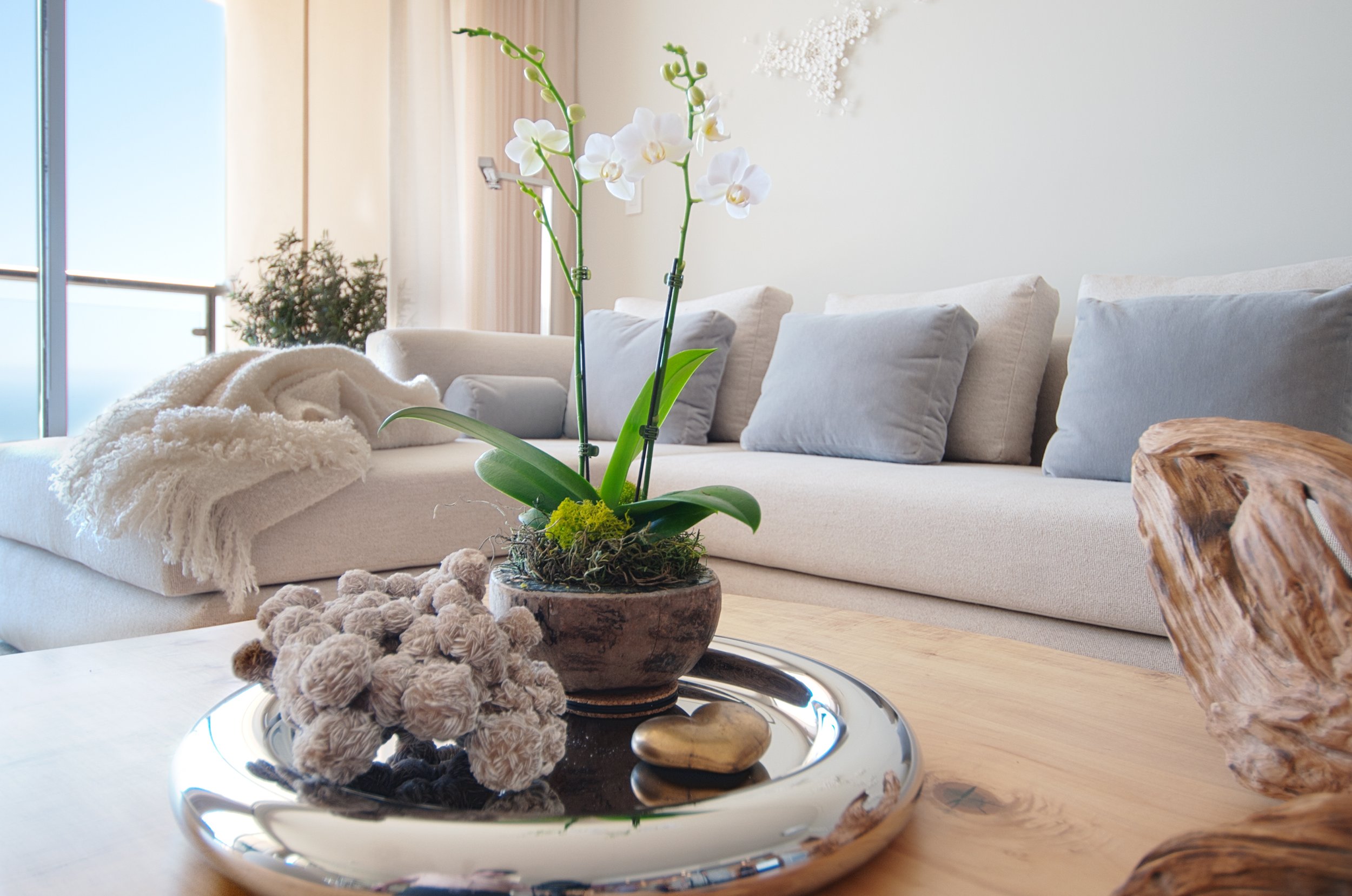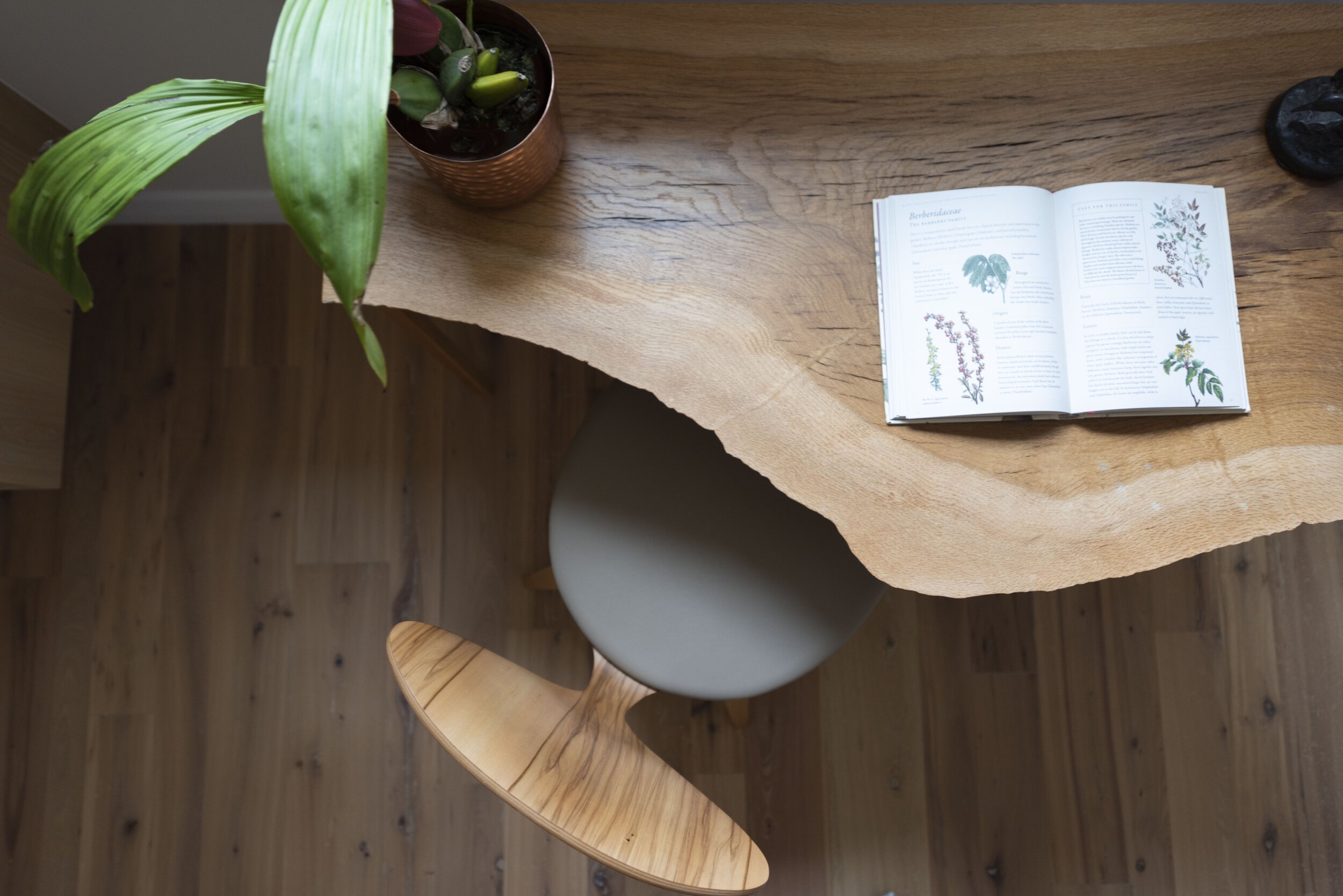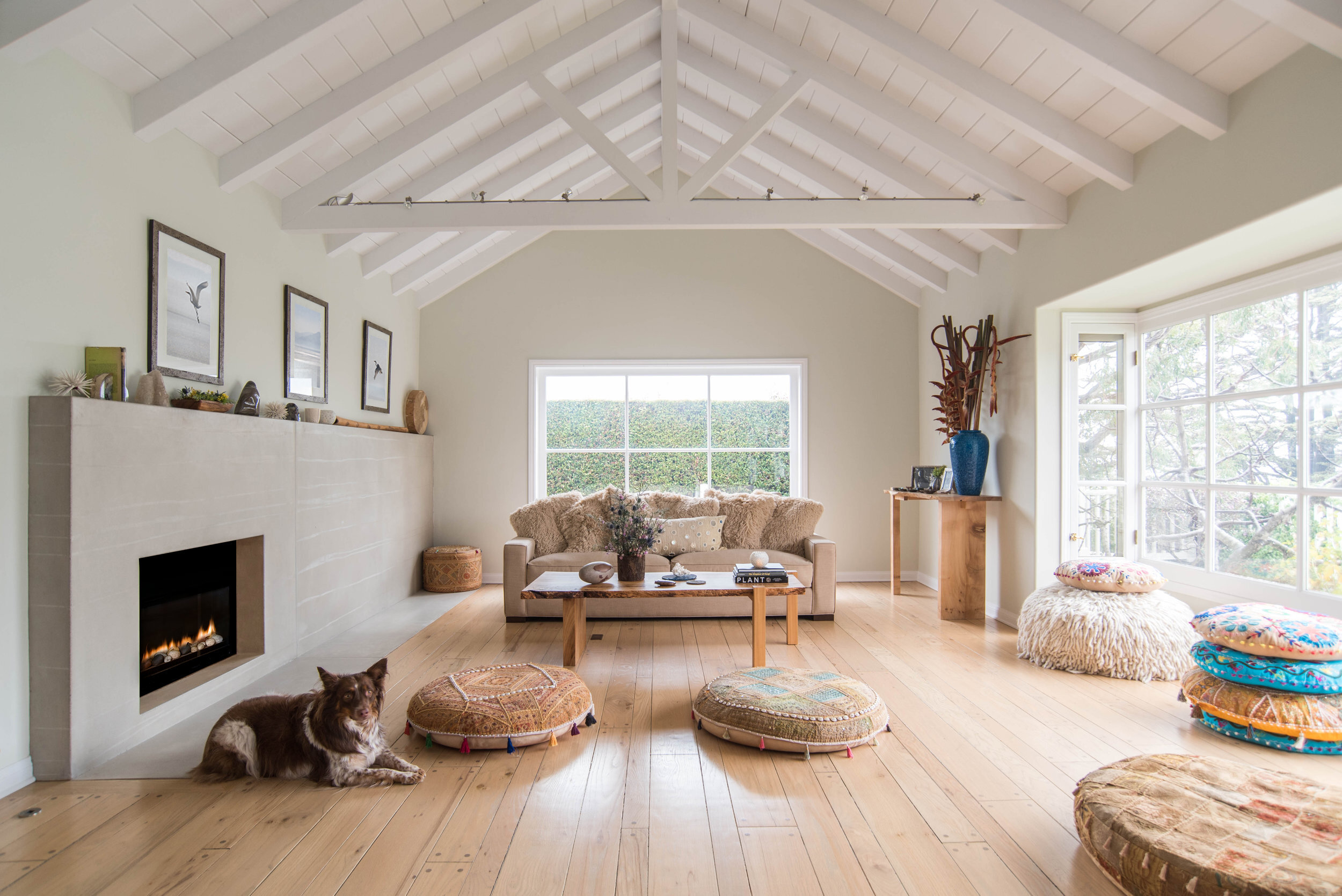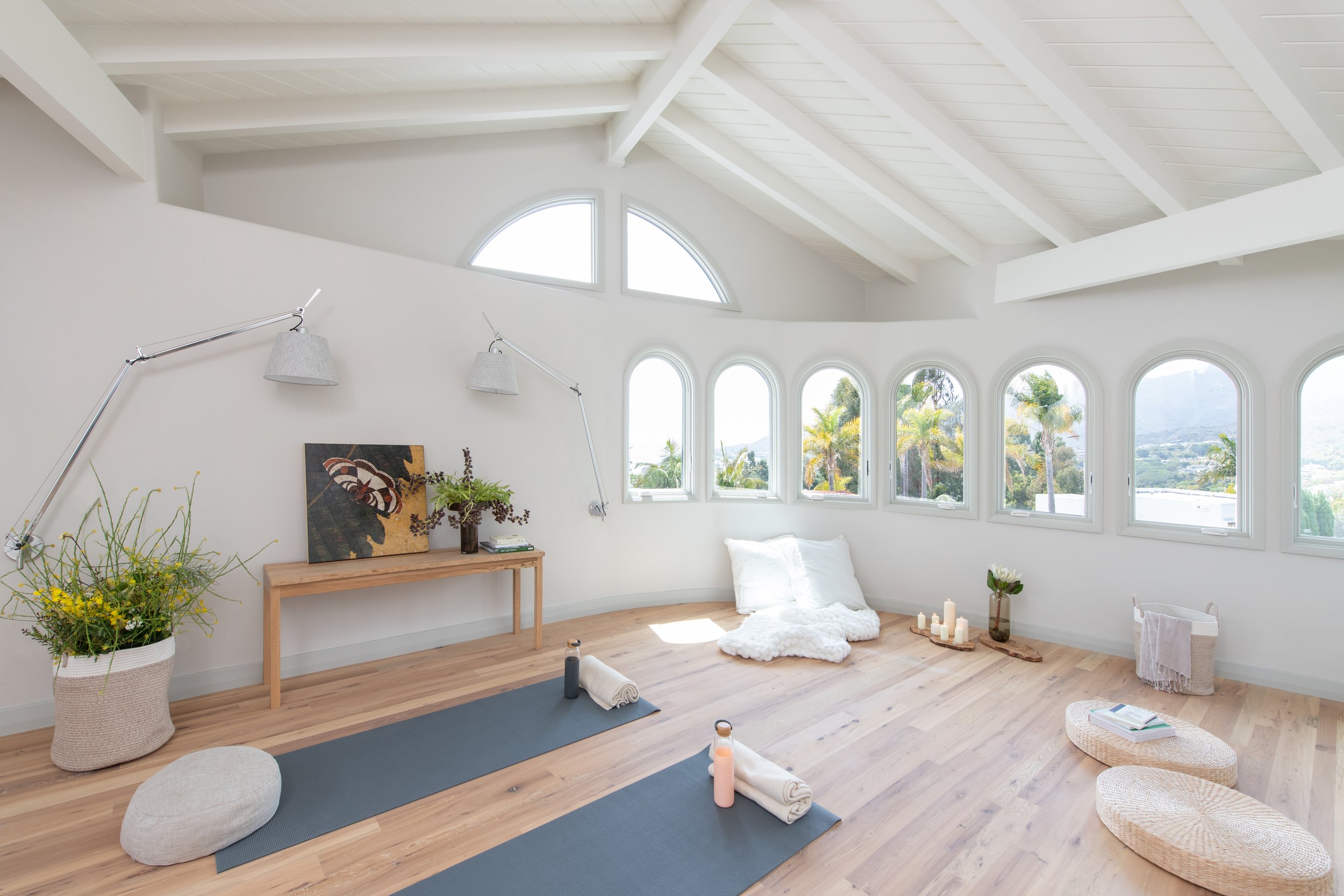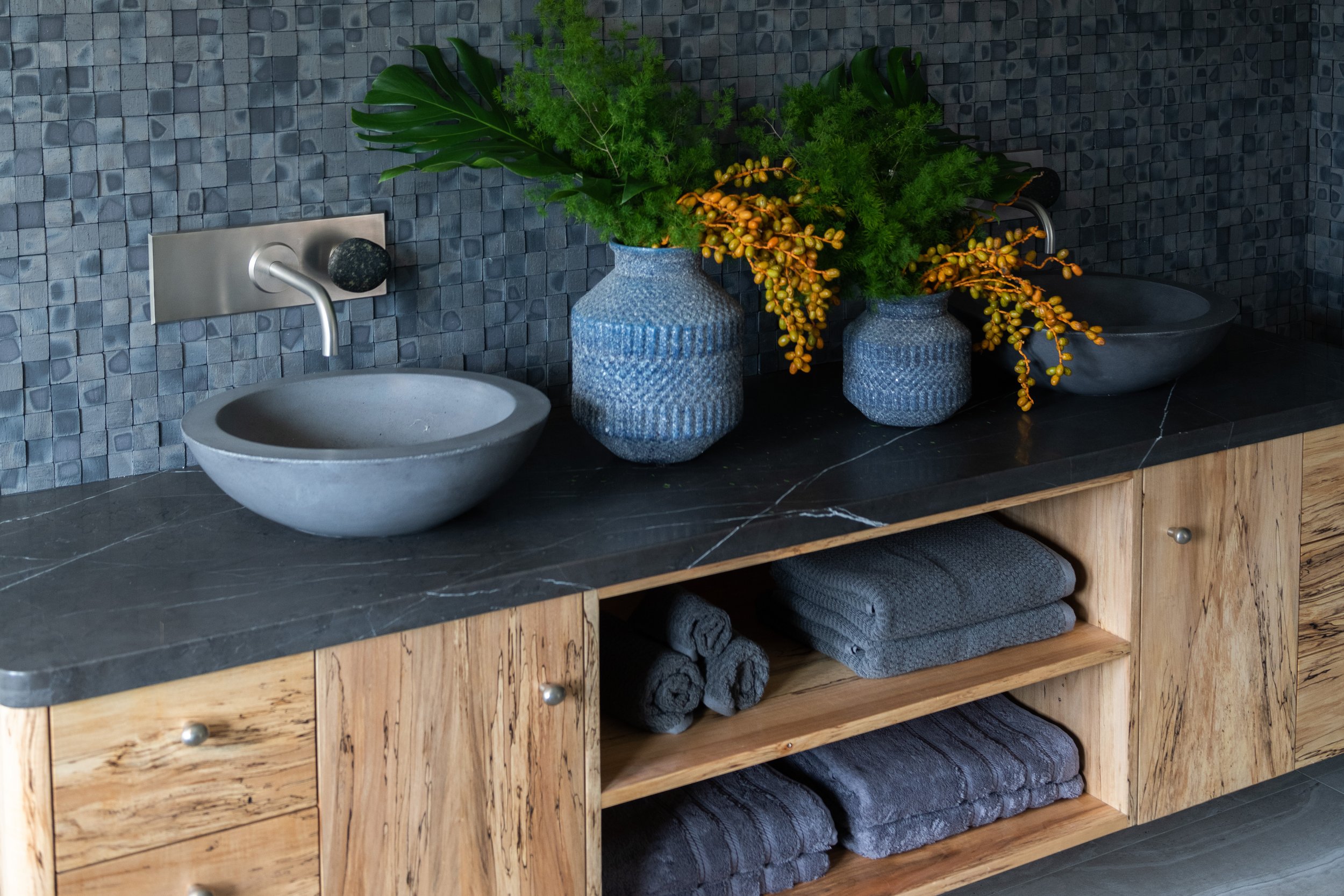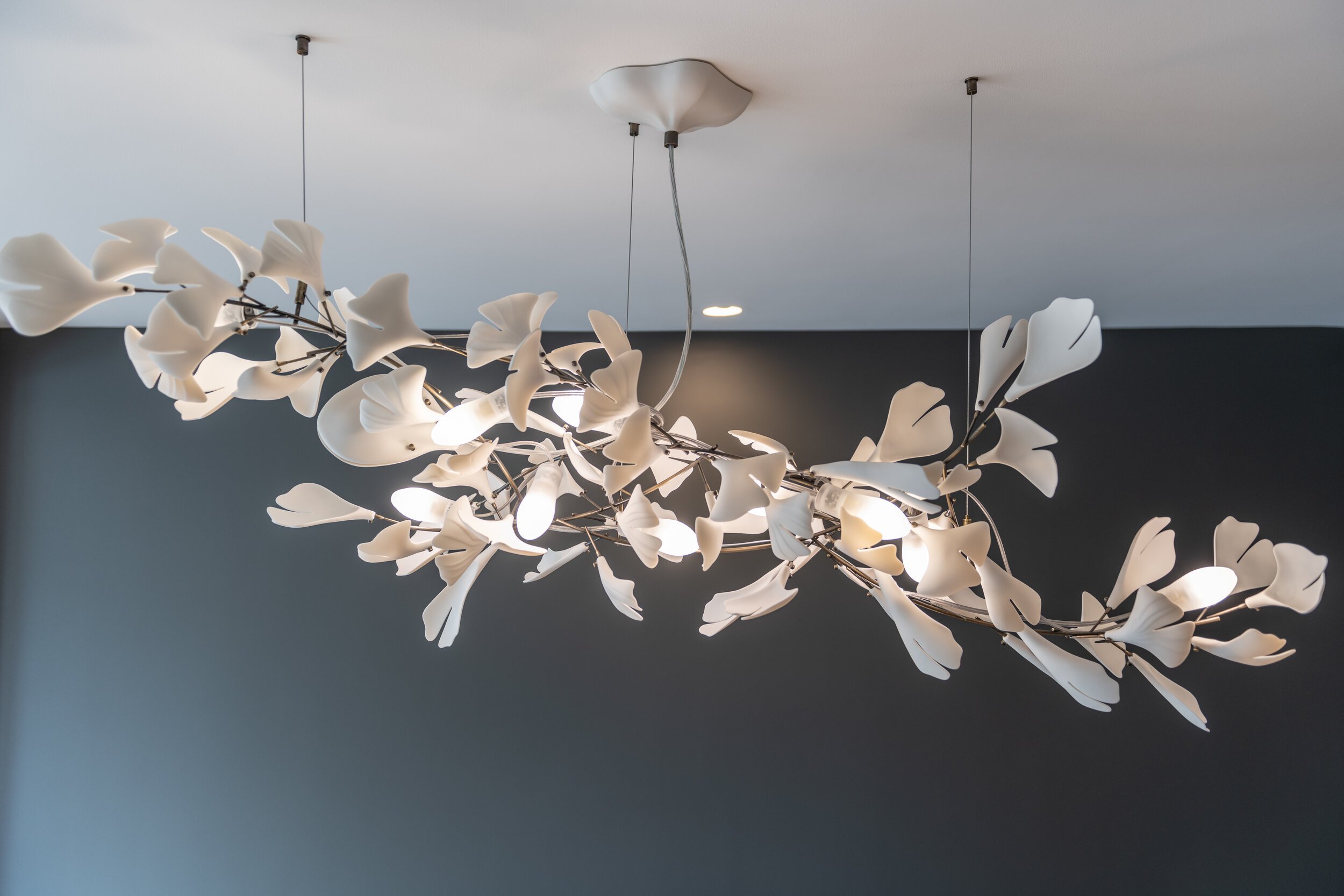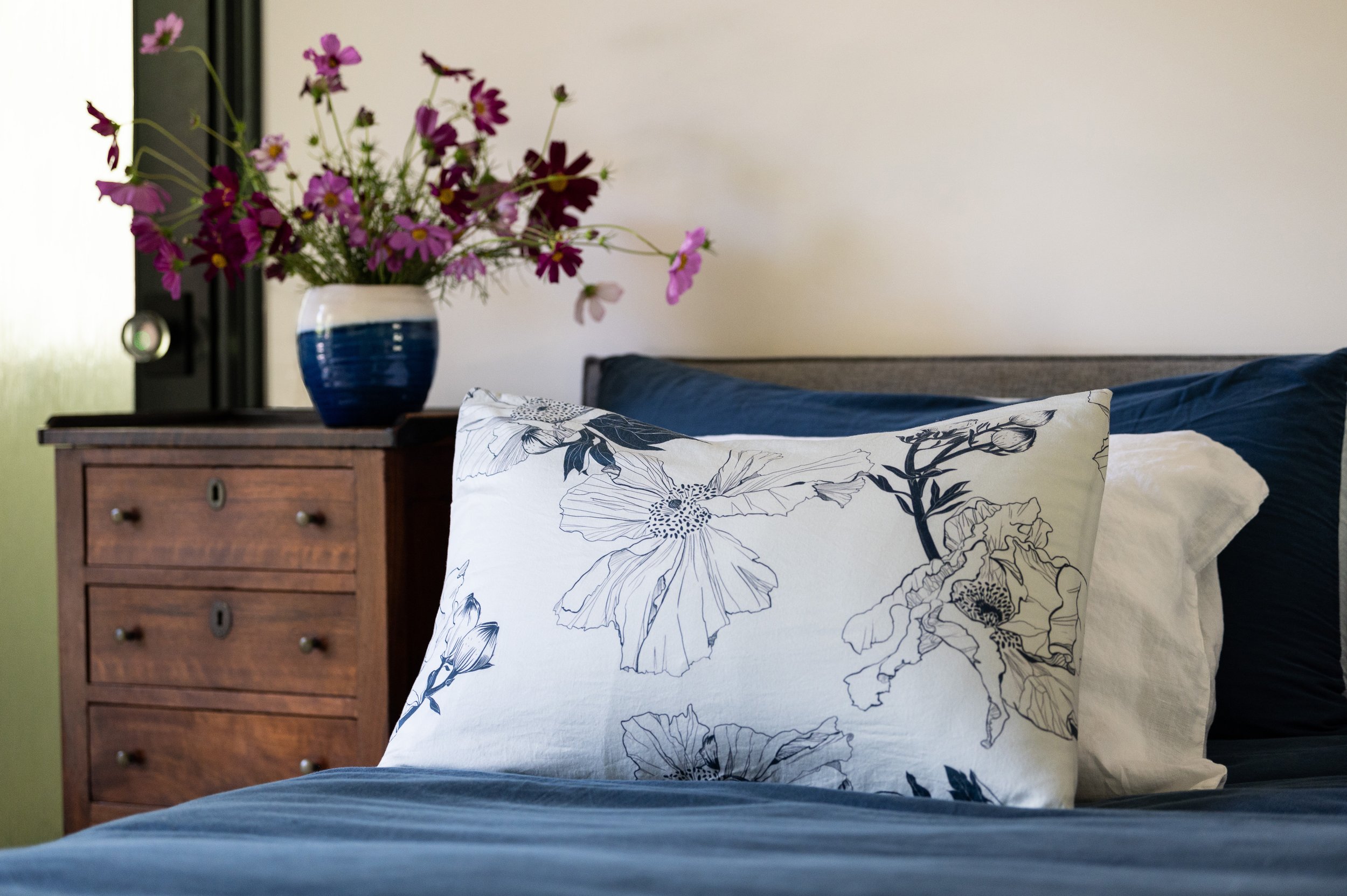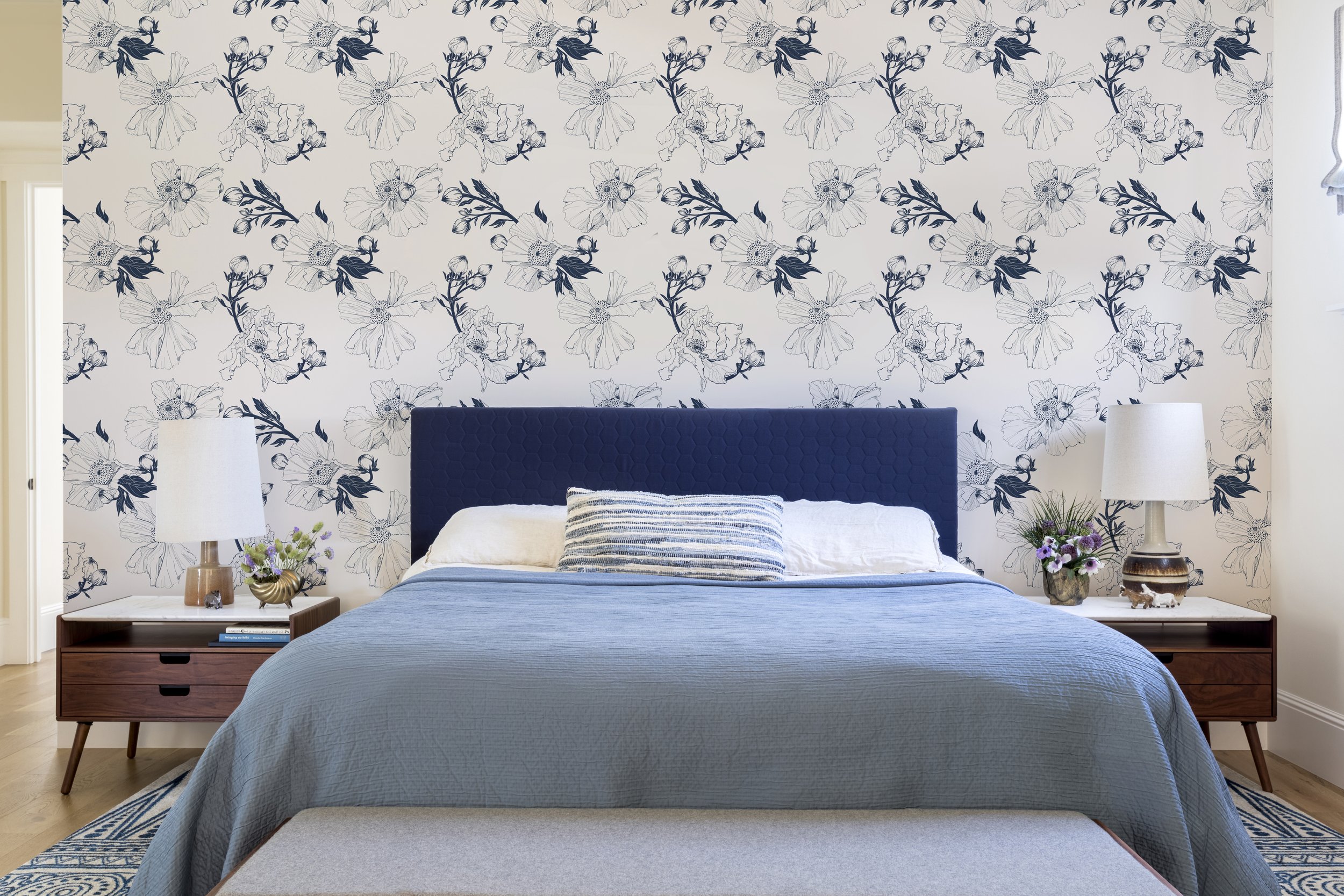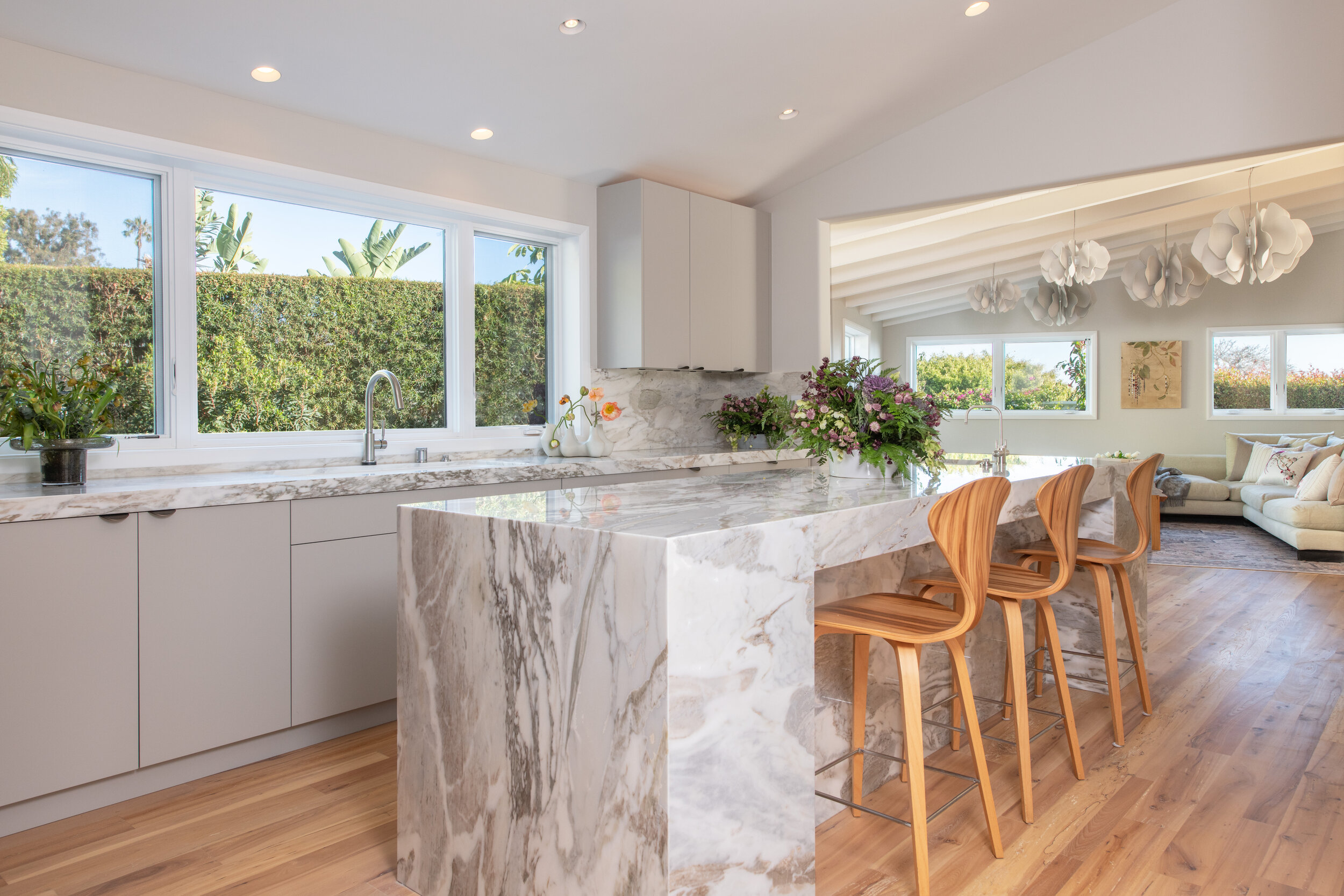How Interior Design Can Facilitate Mindfulness and Reduce Stress and Burnout
/Between post-pandemic issues, 24/7 work culture, and a pile-up of life stressors from the world around us, stress and burnout are at an all-time high. Mindfulness-based stress reduction has become a mainstream and accessible way to reduce stress and increase focus, energy, and overall wellness. The built environment in which we live impacts our stress levels and mental health. Interior design can play a vital role in facilitating mindfulness within our homes because interior designers are trained to understand specific design elements that encourage and cultivate mindfulness, creating a refreshing escape from the world outside. A thoughtful partnership with a professional interior designer can help facilitate a healthy, happy, and enriching home.
According to the World Health Organization, “Burnout is a syndrome conceptualized as resulting from chronic workplace stress that has not been successfully managed. It is characterized by three dimensions: feelings of energy depletion or exhaustion, increased mental distance from one’s job or feelings of negativism or cynicism related to one’s job, and reduced professional efficacy.” (1).
The effects of stress and burnout are not isolated to the workplace. Day-to-day pressures in our everyday life, such as finances, caregiving, illness, moving, etc., can also contribute to experiencing burnout. Also, consider that many of us are working from home post-pandemic. A Journal of Occupational and Environmental Medicine study states, “Blurred work-life boundaries can make it difficult to detach mentally from work which can increase stress and anxiety.” (2).
So how can interior design create spaces that cultivate mindfulness in the home? Interior designers are trained to understand how our built environment affects us. Interior design is more than how something looks or a room is arranged. Designers are educated and experienced in considering environmental factors such as noise, lighting, air quality, scent, privacy, comfort, and how a space can impact our lives.
As Interior Designer Charisse Johnston, FASID, LEED AP, notes, “Professional interior designers not only understand the visual and tactile aspects of a space, but they go beyond the surface by understanding human behavior and physiology to create highly functioning spaces that support physical and mental wellbeing and performance.” (3). Empathetic and wellness-focused interior design can create a custom-made space to support us in the ways we need to live our best life.
Some design strategies to help us manage stress within the home include, but are not limited to:
A Dedicated Space. Consider including private spaces dedicated to practicing mindfulness, such as a wellness room. Devoting a room to wellbeing and motion can help visually illustrate the importance and value of wellness. Having these located away from busy areas is recommended to help create a relaxing and soothing environment.
Personal oasis. Explore a spa-like experience through luxury details such as soaking tubs and new technology such as aromatherapy shower systems. Essential oil showers are among the emerging wellness-focused sustainable design trends.
A clutter-free home. Removing clutter and opting for plenty of storage options can help facilitate an organized home and make a space feel clean and calm. There’s no one-size-fits-all organizing method, as figuring out what works for you and your lifestyle is paramount.
Clean air. Natural and organic materials for furnishings and finishes can help contribute to better indoor air quality.
A restful sleep. Look to weighted blankets to help achieve a good night’s sleep. A wellness-minded interior designer can help create a custom weighted blanket that suits your health needs and personal style to ensure an even better night's sleep.
Including Biophilic design elements can be another valuable tool to help alleviate stress and burnout within the home.
Biophilic design stems from our innate desire to connect with nature. Incorporating this into our home can be a helpful method to connect interior spaces to the landscape outside.
Consider the following strategies to help tap into the conscious experience of spending time in nature through biophilic design:
Natural prints and images. Explore a color palette inspired by the natural world, including natural and organic materials. Some of our favorite nature-inspired goods are from Kale Tree, the Matilija Poppy Wallpaper in Petal, and Mallow Textile Evening Mauve.
Bringing the outside in. Consider incorporating plants, natural imagery, and organic forms. Studies suggest that spending time in and observing our natural surroundings can help promote mindfulness and other health benefits. For example, bird watching can help improve wellbeing and mental health.
Natural lighting. Expanding access to natural light and maximizing access to window views of the natural landscape can help alleviate stress.
The environment in which we live can profoundly affect our ability to focus, our energy levels, and our overall wellbeing. Interior design can be a great tool to integrate and encourage mindfulness at home.
Sarah Barnard is a WELL and LEED accredited designer and creator of environments that support mental, physical and emotional wellbeing. She creates highly personalized, restorative spaces that are deeply connected to art and the preservation of the environment. An advocate for consciousness, inclusivity, and compassion in the creative process, Sarah has appeared in Architectural Digest, Elle Décor, Vogue, HGTV and many other publications. In 2017 Sarah was recognized as a "Ones to Watch" Scholar by the American Society of Interior Designers (ASID).
Works cited
“Burn-out An ‘Occupational Phenomenon’: International Classifcation of Diseases.” World Health Organization. May 2019. https://www.who.int/news/item/28-05-2019-burn-out-an-occupational-phenomenon-international-classification-of-diseases
Xiao, Yijing, et al. “Impacts of Working from Home during COVID-19 Pandemic on Physical and Mental Well-Being of Office Workstation Users.” Journal of Occupational and Environmental Medicine. March 2021. www.ncbi.nlm.nih.gov/pmc/articles/PMC7934324/
“It May Look Good On Instagram But You Want To Enjoy Living In It.” International Council Of Design. January 2021. https://www.theicod.org/en/resources/news-archive/it-may-look-good-instagram-you-want-enjoy-living-it


